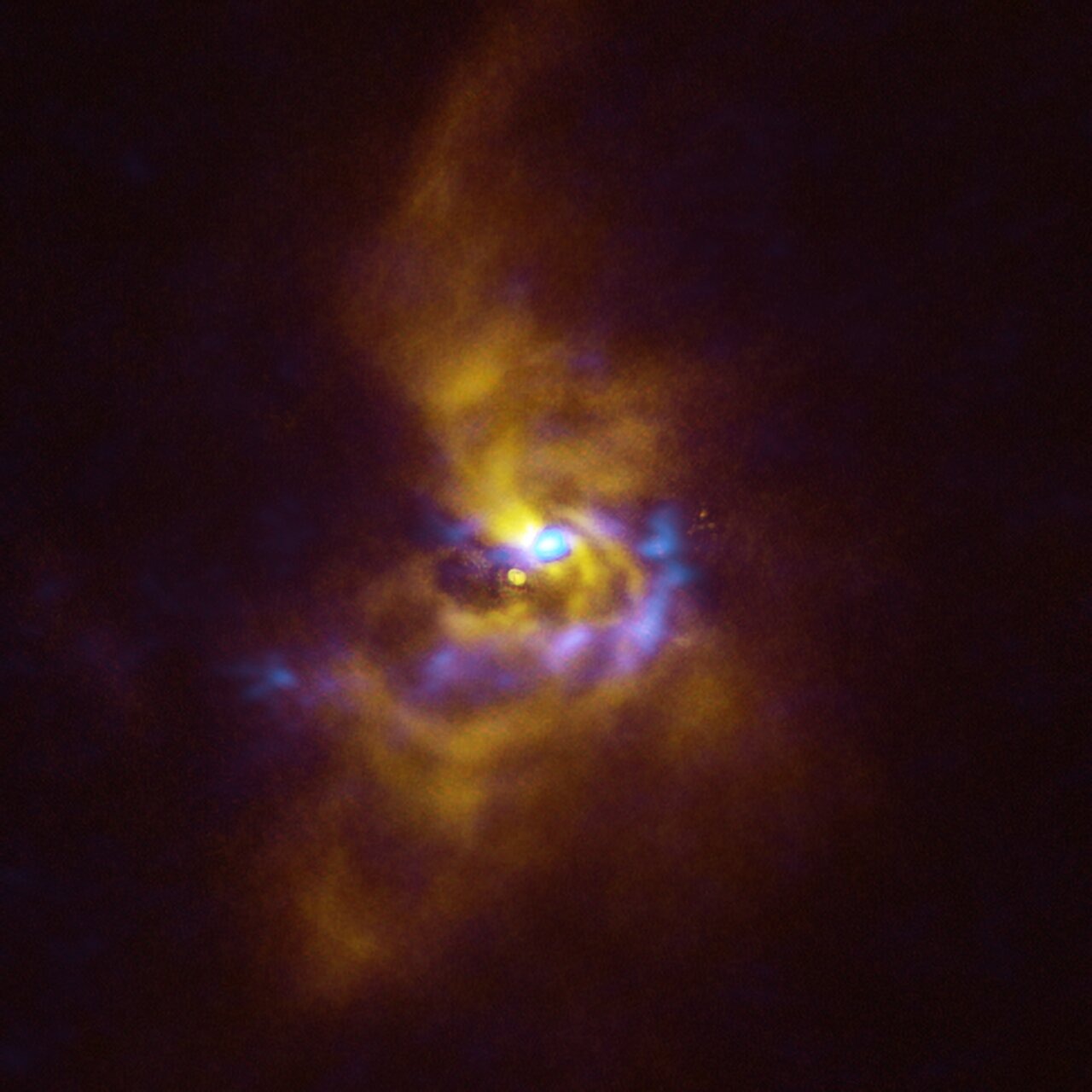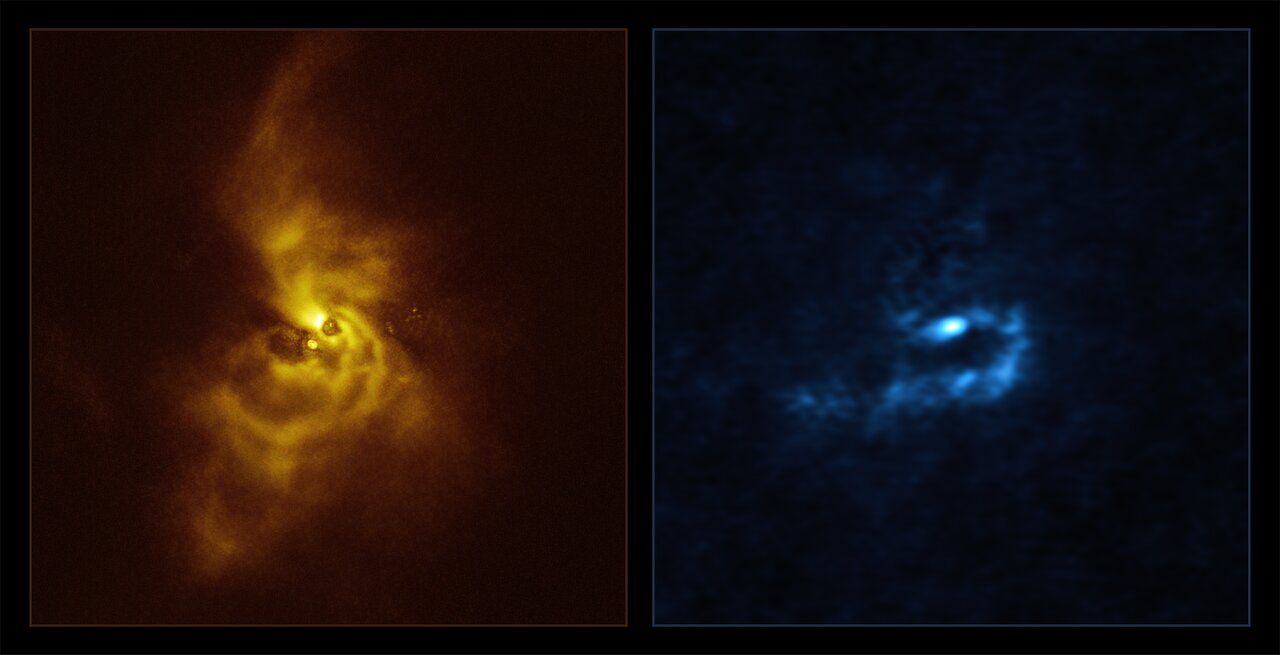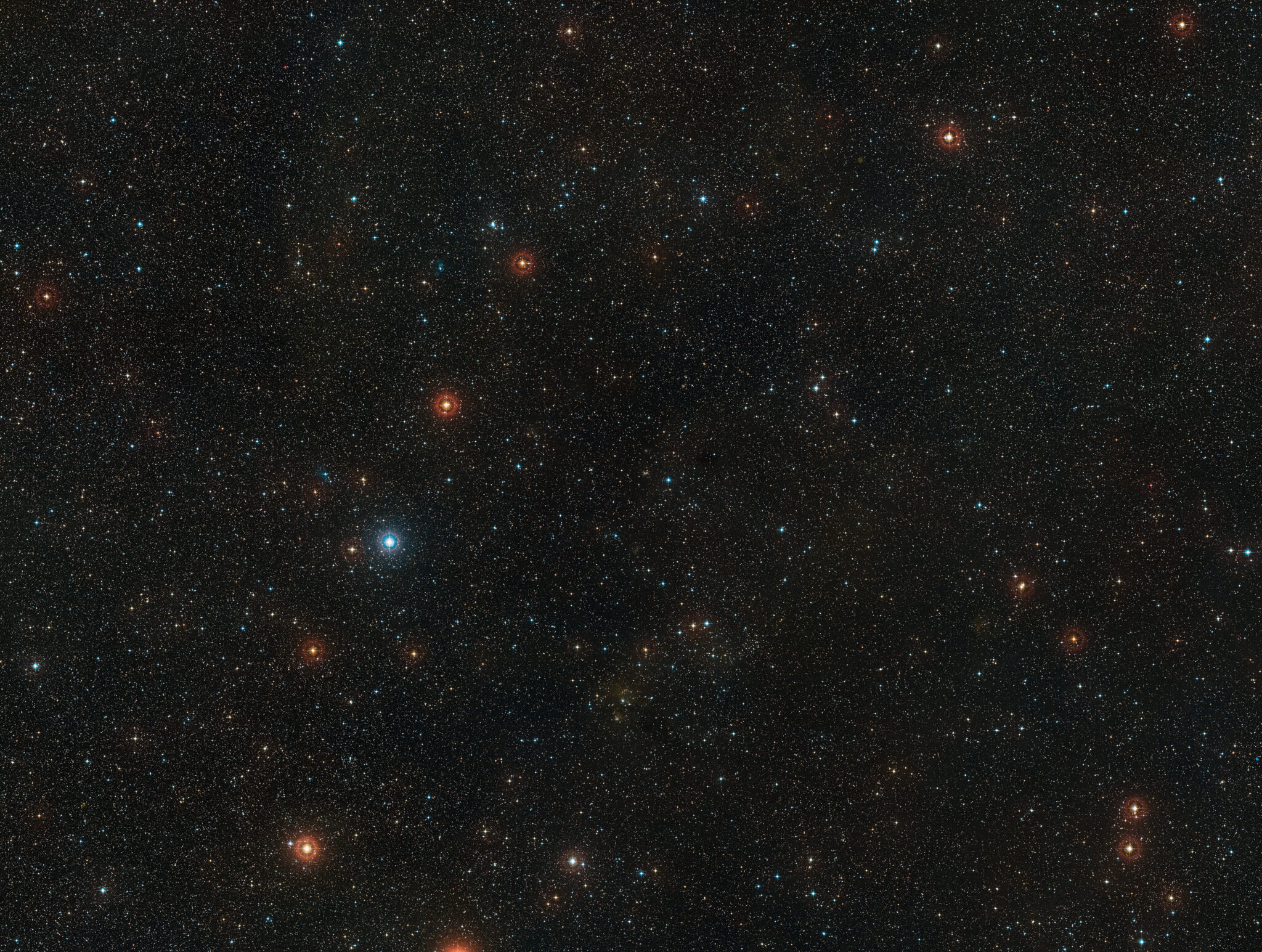The European Southern Observatory has published an exciting photo that provides important guidance on the formation of massive planets like Jupiter. Thanks to the joint efforts of the ESO’s Very Large Telescope (VLT) and the Atacama Large Millimeter/Submillimeter Array (ALMA), researchers have discovered significant clumps of dust located close to the young star, which are likely to become the basis for the creation of giant planets.

Based on an amazing image obtained using the SPHERE exoplanet research tool on the VLT ESO telescope, astronomers have obtained highly detailed information about the material around the star V960 Mon, which is located more than 5,000 light-years away in the constellation Monoceros. The star surprised scientists in 2014 when it suddenly increased its brightness by more than 20 times. Observations using SPHERE, carried out after this “burst”, showed that the material around V960 Mon was concentrated in complex spiral arms extending over distances greater than in our entire Solar System.
This discovery prompted astronomers to review archival observations of the same system that were carried out using ALMA. Observations with VLT allow us to examine the surface of dusty material around the star, while ALMA provides an opportunity to study its internal structure. Observations have found that the spiral arms really break up into clumps, the masses of which approximately correspond to the masses of the planets.
Scenarios of planet formation
Astronomers are considering two main scenarios for the formation of giant planets. The first is the accretion of the nucleus, when dust particles get together. The second is gravitational instability, when large areas of material around a star contract and collapse. The researchers had more evidence of the first scenario, but there was almost no evidence of the second.

“No one had ever seen a real observation of gravitational instability happening at planetary scales — until now,” comments Philipp Weber, a researcher at the University of Santiago (Chile) and the head of the study.
ESO’s instruments will continue to help astronomers uncover more details about this exciting planetary system that is just beginning to take shape. A particularly important role in this process will be played by the ESO’s Extremely Large Telescope (ELT), which is currently being built in the Atacama Desert (Chile). This telescope will provide a unique opportunity to observe the system with unprecedented detail and collect valuable information about it.

Earlier we reported on how planets could make stars “get younger”.
According to ESO
Follow us on Twitter to get the most interesting space news in time
https://twitter.com/ust_magazine

